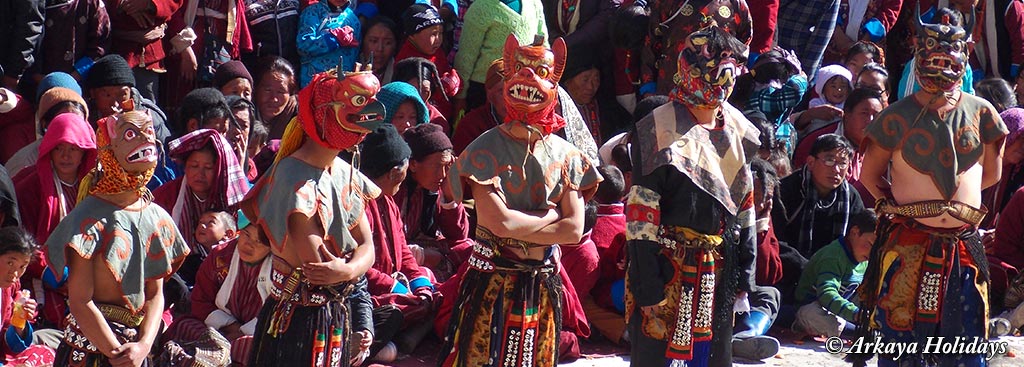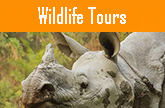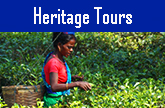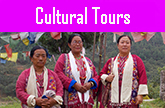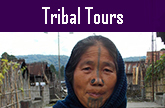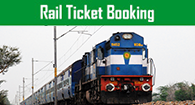Arunachal Pradesh Tour
Tour Duration : 13 Nights / 14 Days
Travel Season : Sep to May
arunachal pradesh tour itinerary:
Day 01: Guwahati - Tezpur (166 kms, 4 hrs drive)
Meet upon arrival at Guwahati Airport / Railway Station.
Guwahati:
Guwahati, 'the city of Eastern light' stands on the southern bank of the mighty river Brahmaputra. It is the capital city of Assam and the gateway to the entire north-eastern states. Modern Guwahati is the hub city of Assam. It fulfills every aspect of a metropolitan city with its advanced means of transport, communication and media, as a major center of business activity, educational institutions, and various administrative and political activities of entire Assam. Besides, its landscape surrounded by hills and the mighty Brahmaputra River, rich and diverse flora and fauna enhances its natural scenic beauty.
If time permits, visit in Guwahati -
Kamakhya Temple:
Kamakhya Temple, one of the greatest 'Shaktipeeth', the shakti shrine of Goddess Kamakhya is situated on the Nilachal Hills. It is the oldest center of Tantric Shaktism. A famous legend regarding the birth of the Kamakhya temple narrates that Lord Shiva, rage with anger at his wife Sati's death, wandered the entire earth carrying Sati's corpse. An organ of Sati fell here and eventually the place became a temple of worship in due course of time. The temple features various stone inscriptions, terracotta works, sculptures and idols of Ganesha and Chamundeswari which are worth mentioning. The famous 'Ambubachi Fair' is celebrated with great enthusiasm every year in mid-June in this temple and devotees from different parts of India throng into it for the special occasion.
Srimanta Sankardev Kalakshetra:
Sankardev Kalakshetra is named after the most illustrious son and Vaishnavite propagator of Assam. It is the hub of all the cultural activities of entire Assam and a center for the promotion and preservation of the cultural heritage of the various tribes, communities and ethnic groups of Assam. It consists of a museum wherein lies the various traditional dresses, jewelry, ancient pottery, weapons belonging to various ethnic groups, sculpture, and works of art created by various artists depicting as a whole the entire Assam. The open air amphitheatre, wherein the cultural performances are held very often and the collection of whole life activities of the legendary artist Dr. Bhupen Hazarika carry a great measure in Kalakshetra.
Later, take transfer to Tezpur.
Tezpur:
Tezpur, the 'city of love' is situated on the northern bank of the Brahmaputra River. The ancient name of Tezpur was Sonitpur, the kingdom of the mighty legendary king, Baan Raja. It was the capital city under his reign. Tezpur holds in its heart many ancient historical events, and witnessed many legends and mythological wars of ancient Assam. The occurrence of a famous war named 'Hari-Hara' is related with the attainment of the present day Tezpur. This battle led to the bloodshed of so many soldiers that the entire place was stained with blood and hence the city came to be known as Tezpur ('Tez' meaning blood and 'pur' meaning city in Assamese language). Present day Tezpur was founded by the British colonial administration in 1835 as the headquarters of Darrang district.
Arrive at Tezpur, check-in at hotel. Later, visit at Tezpur -
Agnigarh:
Legend speaks of Agnigarh as a fortress built by Baan Raja in order to keep his daughter in isolation. The word 'Agnigarh' is a derivation of two Sanskrit words: 'Agni' meaning 'fire' and 'garh' meaning 'fort'. Situated on the north bank of the Brahmaputra River, it maintains its gracefulness with its lush green landscapes of the river. Nowadays, magnificent works of sculpture are depicted referring to the love story of Usha-Aniruddha and Great War 'Hari-Hara Juddha'.
Mahavoirab Temple:
Mahavoirab temple is the oldest Shiva shrine, where the second biggest Shiva linga of the world is worshipped. The temple was built by King Baan, the ruler of Sonitpur in 10th century. King Baan's daughter Princess Usha was a devotee of Lord Shiva and visited the temple for daily worship. Thousands of devotees gather during Shivaratri every year to offer prayers in this temple.
Evening: Free at leisure. Overnight: Stay in hotel.
Day 02: Tezpur - Dirang (202 kms, 6 & 1/2 hrs drive)
In the morning after breakfast, take transfer to Dirang. En-route visit -
Bhalukpong:
Situated on the Assam-Arunachal border, Bhalukpong is widely acclaimed to be a popular tourist spot with the Kameng River flowing through it. It is a famous location for picnic lovers and adventurous tourists.
Tipi Orchid Sanctuary:
Also known as Tipi Orchidarium, this sanctuary is a home to a large collection of about 234 varieties of colorful orchids. Some rare and endangered species of orchids are displayed in the glass house. Some of these orchids have a quality of blooming for a longer duration. This sanctuary serves as an orchid research and development centre set up by the Department of Environment and Forest under Govt. of Arunachal Pradesh for the conservation and development of new variety of species.
Naag Temple:
Naag Temple is one among many Naag (Snake) temples in the region that worships snakes. One can get a majestic view of the Kameng River along with the lofty hills and picturesque valley from the temple atop.
Tenga valley:
Tenga valley is a small town situated in a valley of the Eastern Himalayas in Arunachal Pradesh. It is an important landmark for those traveling to Tawang in the Western end of Arunachal Pradesh. This small town, which also doubles up as an important army check post is blessed with some splendid Himalayan vistas. Tenga valley is situated at an altitude of 6,500 feet above sea level.
After crossing Bomdila, en-route - have a glimpse of Gorichen and Kangto peak.
Later, depart to Dirang.
Dirang:
A sub-divisional head quarter of West Kameng district, Dirang is situated at an altitude of 4910 feet above sea level. It is the habitat of the Tribal Mahayana Monpas. The mild and soothing weather of Dirang with a pleasant wind blowing across the valley endows Dirang as a perfect hill station. Moreover, it also serves as a site for adventure sports like trekking, nature walk, bird watching, sightseeing etc.
Arrive at Dirang. Visit -
Sangti Valley:
Surrounded by the towering ranges of Eastern Himalayas, blessed with pleasant weather round the year with maybe some light snowfall in the winter months, covered with fruit orchards (kiwi fruit, apple, apricot, orange), dotted with pristine forests and meandering fast hill rivers and home to a very interesting culture and tradition. Sangti Valley is surrounded by Eastern Himalayan ranges and you will find this area rich in dense forests and rivers. Black-necked cranes migrate to this valley from China during the months of November and December and after the winter months are over, they set back to their homes during April and May. These birds are referred to as tung tung ka uk by the people of Sangti Valley.
Thereafter, check-in at hotel. Overnight: Stay in hotel.
Day 03: Dirang - Tawang (138 kms, 5 hrs drive)
In the morning after breakfast, visit at Dirang -
Kalachakra Monastery:
Kalachakra Monastery is a 500 years old Buddhist Gompa. It belongs to the Gelugpa school of Tibetan Buddhism.
Hot Water Spring:
Hot water spring is a famous picnic spot which beckons tourists as well as the local people. These hot springs are designated to possess some special healing properties, which makes it a main centre of attraction even to the locals. They mainly visit these springs for holy baths, as it is locally believed that a dip in these springs cleanses all sins and skin diseases.
Later, depart to Tawang. En-route visit -
Jaswant Garh:
The resting abode of the valorous son of the soil, Jaswant Garh is the memorial place built in honor of Mahaveer Chakra awardee (posthumously), Jaswant Singh Rawat. It speaks of the indisputable spirit of this patriot who fought continuously for 72 hours (along with 2 other soldiers) killing 300 Chinese soldiers during 1962 Indo-China War.
Sela Pass:
The entrance to the Tawang Valley, this narrow pass stands at an altitude of 13,714 feet featuring a landscape of frozen lakes, enchanting tiny flowers of different shades, uneven roads and remains of landslides.
Nuranang Waterfall:
Have a brief look at the spectacular natural beauty of Nuranang waterfall, locally known as Phong Phongma waterfall.
Arrive at Tawang and check-in at hotel.
Tawang:
Tawang, the majestic homeland of the Monpas, shares international borders with Tibet and Bhutan standing at an altitude of about 10,000 feet above sea-level. It showcases a scenic view of snow-capped mountain ranges, silent and typical tribal villages, uneven hills, enchanting streams and waterfalls and quiet lakes. Tawang is the abode of the Mahayana Buddhist sect replete with magnificent Buddhist monasteries. Moreover, it is also an adventure's delight as it offers ample scope for exciting trekking and mountaineering experiences.
Evening: Free at leisure. Overnight: Stay in hotel.
Day 04: Tawang
In the morning after breakfast, take a full day excursion of Tawang visiting -
Tawang Monastery:
Tawang is home place of the second largest monastery in the world. The Tawang Monastery is set amidst snow-capped mountains and beautiful valleys. It houses about 450 monks, their residential buildings, library, meeting hall, community kitchen and a three storied prayer hall called Dukhang. Established during 1680-1681 by Merak Lama Lodre Gyatso after fulfilling the wishes of the 5th Dalai Lama, Ngawang Lobsang Gyatso, Tawang monastery is renowned to be the prominent centre of the Gelugpa sect, the socio-religious hub of Tawang for the last 400 years and also a base for Buddhist cultural studies. This magnificent monastery is a visitor's attraction for its beautifully carved 8 meter high, gold plated Bronze idol of Lord Buddha. It treasures a large number of images, Thangkas, mural paintings, and sacred Buddhist ancient scriptures lettered in Gold.
Urgelling Monastery:
The birthplace of His Holiness, the 6th Dalai Lama Urgelling Monastery was established by the Lama Urgen Sangpo. This monastery houses many ancient Buddhist relics along with the footprints and fingerprints of the Dalai Lama, kept for visitors to seek blessings.
Giant Buddha Statue:
Make a visit to the giant Buddha statue located near the Circuit House facing towards the Tawang city. The majestic statue is visible from all parts of the town. It is a serene place to relax and pray.
Craft Centre:
Tawang is rich in unique crafts and handloom products. Variety of craftsmanship is displayed in carpet weaving (woolen carpets), wood carving, handmade papermaking, Thangka painting showcasing a Buddhist influence and sandalwood making.
Local Market:
Make a visit to the local market at Tawang for shopping.
In the evening, visit -
Tawang War Memorial:
A 40 feet multi-colored war memorial built in honor of the martyrs who sacrificed their lives during 1962 Indo-China War. Locally called 'Namgyal Chorten', the memorial is constructed in a stupa design. It bears the names of 2420 warriors written in Gold on 32 black granite plaques.
Optional sightseeing -
Bumla Pass:
Situated at an altitude of 16,500 feet. Bumla Pass displays the monuments of the brave soldiers who sacrificed their lives for the sake of the nation during 1962 Indo-China War. At present, the pass is a military border post for both Indian and Chinese army.
Sangetsar Lake:
Tawang is acclaimed as a nature's delight for its shinning silver lakes, the most popular one being the Sangetsar Lake, surrounded by trees. Also known as Madhuri Lake, the lake was formed during the disastrous earthquake that occurred in 1950 A.D and featured in Shahrukh Khan and Madhuri Dixit starrer Bollywood Hindi thriller movie 'Koyla'.
P T Tso Lake:
The magnificent Pangkang Teng Tso Lake looks like a painter's masterpiece. The shimmering silver lake appears like a blue lapis 'Lzuli' on a bright, clear day encompassed by flowers of different hue during October. The winter months cover the lake with snow changing its colour to stark white.
Ani Gompa (The Nunneries):
The Nunneries are women monasteries, where the nuns adopt priesthood willingly without any compulsion. The oldest of Ani Gompa is Brahma-dung-chung Ani Gompa, commissioned by Lama Karchan Yeshi Gelek in 1595 A.D. Gyangong Ani Gompa, Singur Ani Gompa, Gorsen Chorten are some of the prominent woman monasteries.
Overnight: Stay in hotel.
Day 05: Tawang - Bomdila (180 kms, 6 hrs drive)
In the morning after breakfast, take transfer to Bomdila. En-route visit -
Lhou Village:
Lhou village is an ancient Monpa village. The origin of the village dates back to 16th century or earlier. Buddhist legend speaks of the Monpa tribe as migrants of the plains to Tawang while the Monpa tradition narrates them to be the migrants from Sikkim and Phari. The base of their economy is agriculture, mainly terrace cultivation. Breeding of Yak and mountain sheep is also practiced by some people.
Rock Paintings:
The rock paintings located near Jung includes rock carvings of Lord Buddha Shakyamuni, Avalokesteshuara and Guru Padmasambhava. This spot dedicated in the name of world peace and well being of all people by the former Chief Minister of Arunachal Pradesh, Late Dorjee Khandu, reflects his selfless love for his subjects and ardent devotion to Buddhism.
Later depart to Bomdila. En-route visit near Dirang -
Dirang Village (Basti):
Dirang village, locally known as Dirang Basti is a beautiful village inhabited by Monpa tribal people. The Monpas are the tribal inhabitants residing in Tawang and West Kameng districts of Arunachal Pradesh. The Monpas are the supporters of the lamaistic tradition of Mahayana Buddhism. The presence of beautifully decorated Buddhist Gompas in the village reflects their religious enthusiasm.
Dirang Dzong:
Dirang Dzong Fort is a representation of the culture of the Monpas. This fort, built in 1831 A.D. served as a centre of all the administrative activities of the Monpas during those times. The fort is set atop on a hill top consisting of a four storied stone building. A wooden gate designed in local architectural pattern adds to the splendid uniqueness of the fort.
Arrive at Bomdila. Check-in at hotel.
Bomdila:
Snow-covered mountains, marvelous countryside, lush green forests, Apple orchards and Buddhist Gompas endows Bomdila, located at an altitude of about 8,000 feet above sea level. It is the land of the Monpa, the Sherdukpen, the Aka, the Miji and the Khawa tribes. It is a perfect place for trekking and hiking trails and a centre of local crafts and handloom products. Bomdila offers a magnificent view of Kangto and Gorichen peaks (the highest peaks in Arunachal Pradesh) amidst the Himalayan landscape and snow-capped ranges.
Evening: Free at leisure. Overnight: Stay in hotel.
Day 06: Bomdila - Nameri National Park (166 kms, 5 hrs drive)
In the morning after breakfast, visit at Bomdila -
Bomdila Monastery:
Bomdila Monastery is designated to be the proud possessor of the largest and newest monastery called 'The Gelugpa Gompa'. A reflection of Buddhist and Tibetan heritage and culture, the monastery was established during 1965-66, by the 12th reincarnate of Tsona Gontse Rimpoche. The monastery stands as a comparison to Tsona Gontse Monastery at Tsona in South Tibet started during 15th Century. Present renovation added to this Gompa is the main prayer hall, which was dedicated to the service of God by his Holiness, the 14th Dalai Lama on 13th October, 1997 AD.
Craft Center:
Make a visit to the Craft Center where very fine wooden carpets of colorful designs and Masks are produced.
Later, depart to Nameri National Park.
Nameri National Park:
Nameri National Park is situated in the foothills of Eastern Himalayas and covers an area of about 200 sq km, stretching along both banks of the Jia Bhoroli River in the district of Sonitpur. The park is identified with its rich diversity of flora and fauna. It consists of semi-evergreen vegetation, moist deciduous forests and open grasslands along with about 600 species of flora.
It is the famous resident place for Asian Elephants. It is also a homeland to Royal Bengal Tiger, Leopard, Clouded Leopard, Indian Bison, Gaur, Wild Boar, Sloth Bear, Himalayan Black Bear, Capped Langur, Indian Giant Squirrel, Pygmy Hog, Indian Wild Dog and Civet Cat. Various beautiful birds like White Winged Wood Duck, Great Pied Hornbill, Wreathed Hornbill, Black Stork, Ibis Bill, Blue-bearded Bee Eaters, Babblers, Plovers, Rufous Necked Hornbill etc. are also found here. Click in the link to view Clements Check-list of birds (6th edition, updated in 2012) found in Nameri ->
Arrive at Nameri National Park area and check-in at jungle cottage.
Rest of the day: Free at leisure to explore the nature by your own. Overnight: Stay in jungle cottage.
Day 07: Nameri National Park - Ziro (320 kms, 8 & 1/2 hrs drive)
In the morning after breakfast, take transfer to Ziro. En-route visit -
Naagsankar Temple:
There are many beliefs prevailing regarding the history of Naagsankar temple, a famous Shiva shrine located near Chotia. According to mythology, the powerful King Naagmatta (another name Arimatta), believed to be the son of river God Brahmaputra built the Naagsankar temple. Another belief states that King Naagsankar of Lohitya dynasty who ruled ancient Assam in 378 A.D. built this temple around 4th A.D. The renovation of the temple took place under the reign of Ahom King Su-Seng-Pha in 1480. The main attraction of the temple is a large pond adjacent to it inhabited by a wide variety of rare species of turtles and local fishes. Some turtles are believed to be around 100 years old. Being a Shiva shrine, Shivaratri is celebrated with great pomp and joy in this temple.
If permission granted, visit -
Tea Factory:
Visit a bought-leaf tea factory and witness processing of globally acclaimed Assam tea.
Later, visit on the way -
Itanagar:
In Itanagar, visit -
Ita Fort:
Later, arrive at Ziro and check-in at hotel.
Ziro:
A remarkable plateau and the abode of the Apatani people, Ziro set at a high altitude is renowned for its pine and bamboo grooves, Tarin, the high altitude fish farm, exotic landscape with a delightful view of sunrise from the hilltops, tribal culture and a centre of crafts such as cane and bamboo products. It is a perfect spot for adventure enthusiasts, offering endless experience for trekkers and hikers.
Evening: Free at relaxation. Overnight: Stay in hotel.
Day 08: Ziro
In the morning after breakfast, visit at Ziro -
Apatani tribal villages:
Hong, Hari, Hija, Duta, Bula, Tajang, Bamin Michi and Mudang Tage are eight distinctive Apatani villages situated at Ziro valley. Visit Hong village, the largest village of Apatani plateau and other Apatani villages as well. There are more than 5,000 people living in 700 houses at Hong village. In every village, there are some male community halls called 'Lapang'. Apatani people are famous for tattoo on their forehead and nose plug. Basically, Apatani people are animist who worship all natural gods. Donyi-Polo, i.e, the Sun and Moon is their supreme God. Apatani people are known for paddy cum pisciculture. They celebrate Myoko festival in the month of March for the welfare of their community and Dree festival in July for bountiful harvest, community well being and to keep away the pest.
Shiva Lingam:
The calm hills of Kardo hold one of the largest Shivalinga with a height measuring 25 feet and 22 feet in circumference. The Shivalinga excavated in the recent past is located near Hapoli town.
District Museum:
The District Museum at Zero exhibits a variety of handicrafts and textiles, musical instruments, weapons of the past ages used by different tribes and sub-tribes of Arunachal Pradesh. It displays an exclusive collection of art and craft, jewellery, variety of tribal headgears etc reflecting the traditions of ancient tribal culture.
Craft Center:
Craft Center showcases the unique crafts and handloom products of the Apatani tribe. A wide selection of craftsmanship is displayed in carpet weaving (woolen carpets) and traditional cloths exhibiting a tribal influence.
Regional High Altitude Fish Seed Farm:
Regional High Altitude Fish Seed Farm located at Tarin is a unique reflection of paddy and fish cultivation practiced by the Apatani tribe. The cultivation is carried out encompassing an area of 200 kilometers in Kamala valley. Tourists flock in this high altitude farm to view the distinctive farming covered by pine and bamboo grooves.
Overnight: Stay in hotel.
Day 09: Ziro - Daporizo (170 kms, 6 hrs drive)
In the early morning after breakfast, take transfer to Daporizo. En-route visit -
Nyishi tribal village:
The main community of Raka village is Nyishi tribal people. Nyishi people are also called as 'Nyashang' meaning people of the land. Folk tales and oral literature narrates the Nyishis to be the migrants from Tang Sampo valley of Tibet. Abotani was the earliest ancestor of this tribe. The source of livelihood of this tribe is agriculture, mainly Jhum cultivation. Initially, polygamy was practiced by the Nyishi people, but it is less observed in recent times. The Nyishis celebrate 'Nyokum', a festival honouring their ancestors.
Hill Miri tribal village:
The inhabitants of both Raga and Dokum villages are Hill Miri tribes - one of the sub tribe of Nyishi people. Claiming to be the descendents of Abotani, Hill Miri tribe is believed to be the migrants of Ane Saingik Nite. They comprise a small population of less than 10,000 people in this planet. Hill Miri people are good hunters. They speak the Hill Miri language or sarak, which is a form of Tibetan-Burman language family.
Later,drive to Daporizo.
Daporizo:
Located on the right bank of the Subansiri River, Daporizo is a small town set along remarkable villages and beautiful caves. The residing population here speaks languages such as Tagin, Hill Miri, Adi, Assamese, Hindi and English. Suspension bridges carved out of bamboo and cane over the Subansiri River are great attraction to tourists. Daporizo is also famous for its picnic spot.
Arrive at Daporizo and check-in tourist lodge / hotel.
Later, visit -
Tagin tribal village:
The inhabitants of Ligu village are Tagin and Hill Miri tribal people. Tagin tribe is regarded to be the migrants of Penji, a village in Tibet. They are believed to be the descendants of Abotani. The Tagins are the supporters of Donyi-Polo, whereas the Naa and Mra (two groups of Tagin) are strong followers of Tibetan Buddhism. Si-Donyi is an important festival of this tribe celebrated to honour the Earth and the Sun.
Overnight: Stay in tourist lodge / hotel.
Day 10: Daporizo - Along (160 kms, 6 hrs drive)
In the morning after breakfast, visit at Daporijo -
Tagin tribal village:
Shikarizo, one beautiful village in Daporizo is resided by only Tagin tribal people. Tagin tribe is regarded to be the migrants of Penji, a village in Tibet. They are believed to be the descendants of Abotani. The Tagins are the supporters of Donyi-Polo, whereas the Naa and Mra (two groups of Tagin) are strong followers of Tibetan Buddhism. Si-Donyi is an important festival of this tribe celebrated to honour the Earth and the Sun.
Menga Cave:
Menga cave is a magnificent natural cave honoured to Lord Shiva. Visitors are attracted in large numbers to this popular place of worship. Devotees gather in large numbers during Makar Sankranti and Shivaratri festivals.
Then take transfer to Along. En-route visit -
Galong tribal village:
Bararupak village is inhabited by Galong tribe. One of the most populous tribe of the state, the Galong tribe reside in West Siang, south western side of East Siang, south eastern side of Upper Subansiri and in some small areas in Lower Dibang Valley and Changlang districts of Arunachal Pradesh. Both monogamy and polygamy is prevalent in this tribe following a patriarchal system of society. The base of economy of this tribe is agriculture. Initially, shifting cultivation was practiced by Galong people, but at present Wet Rice and terrace cultivation dominates the agricultural scenario. Although Galong is spoken by 95% of the population, people also speak Assamese, Hindi and English language.
Later, drive to Along.
Along:
Set on the south bank of river Siyom at an altitude of 300 meter above sea level, Along (locally called as Aalo) small town, covered with scenic natural surroundings, serves as a suitable site for holidaying during the summer months and adventure sports like trekking, hiking and angling as well.
Arrive at Along and check-in hotel.
Evening: Free at relaxation. Overnight: Stay in hotel.
Day 11: Along
In the morning after breakfast, take a full day excursion of Along visiting -
Donyi-Polo Temple:
Established in 1972, Donyi-Polo temple at Along is a religious center of the followers of Donyi-Polo religion. Out of 400 community centers in Arunachal Pradesh, it is designated to be the only worshipping centre of Donyi-Polo religion in the entire state. The religion possesses no written scriptures. The rituals and traditions have been orally passed from ancestors to the next generations. There is a belief among Donyi-Polo animists of a common lineage of all the people of Arunachal Pradesh as the descendants of Abotani. The rituals of this religion include invoking of the spirit and nature along with holy sacrifices to the spirits. The Donyi-Polo temple acts as a centre of worshipping objects of nature, the Sun and the Moon. The temple premises consist of a community hall, a meditation room and a prayer hall.
Galong tribal villages:
The inhabitants of Kabu, Pobdi and Paya villages are Galong tribal people. Both monogamy and polygamy is prevalent in this tribe following a patriarchal system of society. The base of economy of this tribe is agriculture. Initially, shifting cultivation was practised by Galong people, but at present wet rice and terrace cultivation dominates the agricultural scenario. Even though Galong language is spoken by 95% of their total population, people also speak Assamese, Hindi and English language.
Suspension Bridge:
The Suspension Bridge on the Siang River is another tourist attraction worth watching. It is made of local cane and bamboo which exhibits superb skills of the local tribal people. The bridge is approximately 60 to 70 meters long, connecting to the other hill tribes of nearby areas. Fishing in Siang river near the bridge is a favourite pastime of the locals.
Ramkrishna Mission:
The joint efforts and initiative of Govt. of India and the mission authorities at Belur Math led to the establishment of a school at Along in 1966. Started with an enrolment of only 35 students in a thatched building, the school gradually introduced in its curriculum vocational courses on tailoring, carpentry, industrial workshop, computer training etc. It also opened up a printing press and included accessories such as dairy farm, poultry farm and an agricultural field within the school campus. The school, providing co-education has increased its student population to a number of 2241 with a hostel facility of 260 tribal boys only. Apart from providing formal education and academic excellence among the students, the mission aims at the overall development of the students including moral education, health education, vocational training to prepare them for self sufficiency in their future lives.
Later, visit the local market at Along.
Evening: Enjoy a cultural show of Erap dance (warrior dance of Galong tribe) or Ponu dance (of Galong tribe) or Tapi dance (of Adi- Minyong tribe) along with an ethnic feast. (Optional)
Overnight: Stay in hotel.
Day 12: Along - Pasighat (130 kms, 3 hrs 30 mins drive)
In the morning after breakfast, take transfer to Pasighat. En-route visit -
Confluence of Siang and Siyom:
Have a look into the scenic beauty of confluence of two rivers - Siang and Siyom. The source of Siang River is Talung Tso Lake in south-western part of Tibet. This trans-boundary river is named as Yarlung Tsangpo in Tibet, Siang in Arunachal Pradesh, Brahmaputra in Assam and Jamuna in Bangladesh.
Komsing:
Drive further to visit -
Adi Minyong tribal village:
The inhabitants of Pangin village are Adi Minyong tribal people. Minyong, Padam and Passi are the sub tribes of Adi. They practice both terrace farming and shifting cultivation. Solung is the main festival of Adi tribe celebrated during the 1st week of September every year. Adi people have a community hall called Dere where children of different age group gather to learn about social norms from elderly citizens.
Kekar Monying:
Later drive to Pasighat.
Pasighat:
One of the oldest towns of Arunachal Pradesh and the homeland of the Adi tribe, Pasighat, set on the bank of river Siang is surrounded by snow-covered peaks and rocky mountain. It supports a wild variety of flora and fauna. Adventure sports like trekking and hiking, river rafting, boating and angling on the Siang river call for an exciting trip to this place.
Arrive at Pasighat and check-in hotel. Overnight: Stay in hotel.
Day 13: Pasighat
In the morning after breakfast, take an excursion to Adi Padam and Idu Mishmi tribal villages.
Adi Padam tribal village:
The inhabitants of Mebo village are Adi Padam tribal people. Padam, Passi and Minyong are the sub tribes of Adi tribe.
Idu Mishmi tribal village:
The inhabitants of Aohali village are Adi Padam tribal people.
Later, return to Pasighat. Overnight: Stay in hotel.
Day 14: Pasighat - Dibrugarh departure (150 kms, 3 hrs drive)
In the morning after breakfast, take transfer to Dibrugarh. En-route cross - the mighty Brahmaputra River through newly built Bogibeel bridge.
Dibrugarh:
The 'Tea City of India', Dibrugarh is located in the eastern part of Assam. It is situated on the banks of the river Brahmaputra in upper Assam. Main attraction is mainly tea gardens along with oil and natural gas reserves. There are more than 165 tea gardens in and around Dibrugarh district. The foothills region of Dibrugarh is composed of lateritic soils, which is suitable for the production of tea plants. Besides, Dibrugarh city is the main educational centre of Upper Assam with important educational institutions like Dibrugarh University, Assam Medical College, Kanoi College, Salt Brook Academy etc.
Arrive at Dibrugarh airport / railway station to catch flight / train for your onward destination.
Tour terminates here
North East India Tourism
Package Inclusions:
# All ground transportation by a dedicated and exclusive vehicle driven by our experienced and friendly driver
Package Exclusions:
# Any air fare or train fare







